
The Simsonbrunnen or Samson fountain is a fountain on the Kramgasse in the Old City of Bern, Switzerland. It is a Swiss Cultural Property of National Significance [1] and is part of the UNESCO World Heritage Site of the Old City of Bern.

The Simsonbrunnen or Samson fountain is a fountain on the Kramgasse in the Old City of Bern, Switzerland. It is a Swiss Cultural Property of National Significance [1] and is part of the UNESCO World Heritage Site of the Old City of Bern.
The fountain represents the biblical story of Samson killing a lion found in Judges 14:5–20. According to the story, Samson was born to a sterile Israelite couple on the conditions that his mother and her child (Samson) abstain from all alcohol and that he never shave nor cut his hair. Because of his commitment to live under these conditions, Samson is granted great strength. As a young man he falls in love with a Philistine woman and decides to marry her. At this time, the Philistines ruled over the Israelites and Samson's decision to marry one causes great concern among his family. He calms their concerns and travels to marry his love. On the way he is attacked by the lion and with his incredible strength kills the lion. Later, he sees that bees have built a honeycomb in the lion's body. He uses this event as the basis of a riddle, which when not answered, gives him a pretext to attack the Philistines and lead an unsuccessful rebellion.
The fountain, built in 1544 by Hans Gieng, is modeled after the Simsonbrunnen in Solothurn. [2]

Samson and Delilah, Op. 47, is a grand opera in three acts and four scenes by Camille Saint-Saëns to a French libretto by Ferdinand Lemaire. It was first performed in Weimar at the Grossherzogliches Theater on 2 December 1877 in a German translation.

Samson was the last of the judges of the ancient Israelites mentioned in the Book of Judges and one of the last leaders who "judged" Israel before the institution of the monarchy. He is sometimes considered as an Israelite version of the popular Near Eastern folk hero also embodied by the Sumerian Gilgamesh and Enkidu, as well as the Greek Heracles. Samson was given superhuman powers by Yahweh in the form of extreme strength.
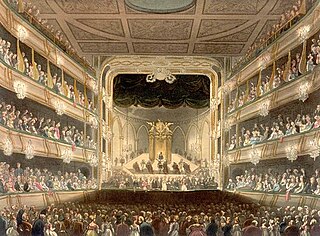
Samson is a three-act oratorio from 1743 by George Frideric Handel, considered to be one of his finest dramatic works. It is usually performed as an oratorio in concert form, but on occasions has also been staged as an opera. The well-known arias "Let the bright Seraphim", "Total eclipse" and "Let their celestial concerts" are often performed separately in concert.

Delilah is a woman mentioned in the sixteenth chapter of the Book of Judges in the Hebrew Bible. She is loved by Samson, a Nazirite who possesses great strength and serves as the final Judge of Israel. Delilah is bribed by the lords of the Philistines to discover the source of his strength. After three failed attempts at doing so, she finally goads Samson into telling her that his vigor is derived from his hair. As he sleeps, Delilah calls a servant to cut Samson's hair, thereby enabling her to turn him over to the Philistines.
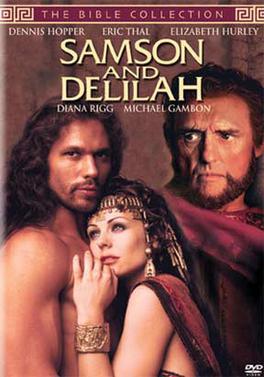
Samson and Delilah is a German/Italian/British/American television miniseries that was first shown on TNT in the United States. It was directed by Nicolas Roeg and broadcast December 8, 1996.

Hans Gieng was a Swiss Renaissance sculptor best known for his public fountain figures in the Old Town of Bern as well as Fribourg.

The Old City is the medieval city center of Bern, Switzerland. Built on a narrow hill bordered on three sides by the river Aare, its compact layout has remained essentially unchanged since its construction during the twelfth to the fifteenth century. Despite a major fire in 1405, after which much of the city was rebuilt in sandstone, and substantial construction efforts in the eighteenth century, Bern's old city has retained its medieval character.
Samson was a character in the Biblical Book of Judges. He is said to have been raised up by God to deliver the Israelites from the Philistines. In the story, God grants him unusual strength, which is facilitated by a Nazirite vow prohibiting him from cutting his hair. His strength and violent temper are illustrated in several colorful stories portraying him as dominant over man and nature. He also succeeds in his charge to battle the Philistines, more through acts of personal vengeance than by any formal military strategy. Eventually the Philistines defeat him by bribing his new love interest, Delilah, into extracting from him the secret to his strength. Once learned, the Philistines cut his hair while he sleeps, at which point he is easily defeated.

The Kindlifresserbrunnen is a painted stone fountain at the Kornhausplatz in Bern, Switzerland. It is one of the Old City of Bern's fountains from the 16th century.
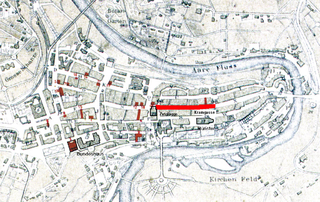
The Kramgasse is one of the principal streets in the Old City of Bern, the medieval city centre of Bern, Switzerland. It was the center of urban life in Bern until the 19th century. Today, it is a popular shopping street. Its length, slight curve and long line of Baroque façades combine to produce Bern's most impressive streetscape.

The Gerechtigkeitsbrunnen is a 16th-century fountain in the Gerechtigkeitsgasse in the Old City of Bern, Switzerland. It is the only Bernese fountain to retain all original design elements, and is listed as a cultural heritage of national significance.

The Spitalgasse is one of the streets in the Old City of Bern, the medieval city center of Bern, Switzerland. It is part of the Äussere Neustadt which was built during the third expansion from 1344 to 1346. The eastern end is at Waisenhausplatz and Bärenplatz while the western end is at Bahnhofplatz near the Church of the Holy Ghost. It is part of the UNESCO Cultural World Heritage Site that encompasses the Old City.

The Pfeiferbrunnen is a fountain near Spitalgasse 21 in Bern, Switzerland. It is one of the Old City of Bern's 16th-century fountains and is part of the list of Swiss heritage sites of national significance.

The Kornhausplatz is a plaza in the Old City of Bern, the medieval city center of Bern, Switzerland. It is on the edge of the Zähringerstadt which was built during the founding of the city in 1191, though the plaza wasn't built until later. It is located near the Kornhausbrücke and the Zytglogge clock tower. It is part of the UNESCO Cultural World Heritage Site that encompasses the Old City.
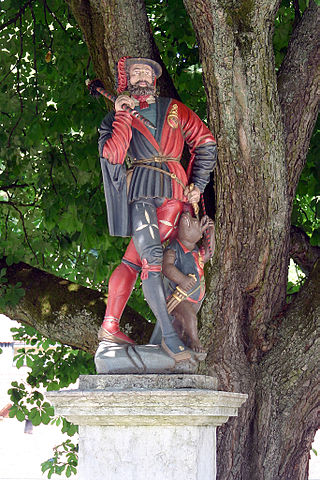
The Läuferbrunnen is a fountain on Läuferplatz in the Old City of Bern, Switzerland. It is a Swiss Cultural Property of National Significance and is part of the UNESCO World Heritage Site of the Old City of Bern.
The Zähringerbrunnen is a fountain on Kramgasse in the Old City of Bern, Switzerland. It is a Swiss Cultural Property of National Significance and is part of the UNESCO World Heritage Site of the Old City of Bern.

The Anna-Seiler-Brunnen is a fountain on Marktgasse in the Old City of Bern, Switzerland. It is a Swiss Cultural Property of National Significance and is part of the UNESCO World Heritage Site of the Old City of Bern.

Hercules, Samson and Ulysses is a 1963 Italian Metrocolor peplum film directed by Pietro Francisci.
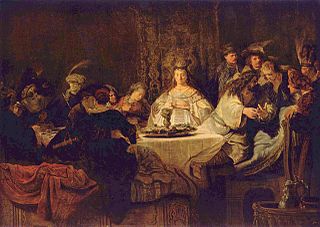
Samson's riddle is found in the biblical Book of Judges, where it is incorporated into a larger narrative about Samson, the last of the judges of the ancient Israelites. The riddle, with which Samson challenges his thirty wedding guests, is as follows: "Out of the eater came something to eat, and out of the strong came something sweet."
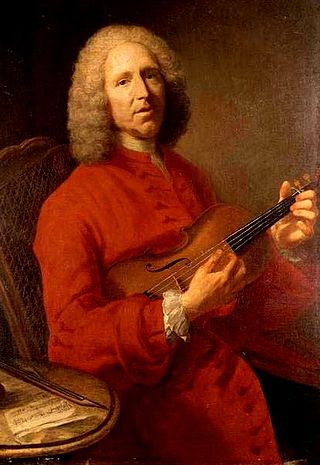
Samson is an opera by the French composer Jean-Philippe Rameau with a libretto by Voltaire. The work was never staged due to censorship, although Voltaire later printed his text. Rameau intended the opera on the theme of Samson and Delilah as the successor to his debut Hippolyte et Aricie, which premiered in October 1733. Like Hippolyte, Samson was a tragédie en musique in five acts and a prologue. Voltaire had become a great admirer of Rameau's music after seeing Hippolyte and suggested a collaboration with the composer in November 1733. The opera was complete by late summer 1734 and went into rehearsal. However, a work on a religious subject with a libretto by such a notorious critic of the Church was bound to run into controversy and Samson was banned. An attempt to revive the project in a new version in 1736 also failed. The score is lost, although Rameau recycled some of the music from Samson in his later operas.